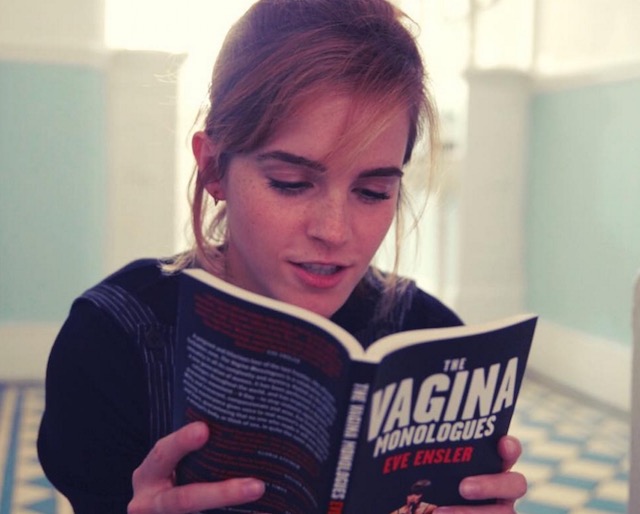In the depths of British winter, with a gale outside and a stack of essays to be written inside, I lightheartedly sent a male friend a link to an erotic art emporium as a little afternoon indulgence.
The emporium’s art collection focused primarily on the sacred yoni. One in particular was a cartoon of an untamed pubic bone overlooking the clitoris with the caption “wild woman.” I found it endearing and bold. I loved it without knowing why. Interestingly, my male friend didn’t feel the same way:
“But…would you want that in your room?” he said.
“Yes, I should think I would.”
“Of a vagina?” he asked.
“Yes, I rather think so.”
“A hairy, cartoon vagina hanging up?”
“Yes, but it’s so much more than just a hairy, cartoon vagina,” I said.
“Okay. What is it then? I’m trying to think of what it would be like if I had a big cartoon p*ssy as part of my decor?”
This is when the cogs began to turn. I loved the drawing. I knew this. The girl next to me in the library knew this. But why did I want a yoni hanging up on my wall?
Art is a form of discourse. It comments and engages with the society in which it is created—much like literature, film, television, and music. Art spreads the love, hate and cultural values of its time. This means that the oppression of women can be traced through history by looking at female representations in art.
The female nude—wow, that’s a conversation starter. The female body has been celebrated throughout the history of art: nude, robed, and somewhere between the two. However, in the male counterparts, where the phallus sprouts boldly, the female reproductive organs are coquettishly masked (partly due to anatomical location, I concede).
The female body, as presented in art, was seen through the vision of the male. The female nude was designed to celebrate the woman in relation to the male, with a serious lack of yonis on display. The sacred female organ is omitted for the sake of decency. And yet, the shapely curves of the rest of the body are displayed to meet the ideal of what males consider femininity.
This brings us to the present.
As I sat in the uncomfortable chair in the library, fiddling with the up-and-down lever, I realised that the male gaze is still real. When women empower themselves and their sexuality, men feel alienated. They are made redundant in the process because they are not the epicentre of power.
Take the female nude as we understand it today: Women take pictures of themselves for their sexual partners to consume and are judged for it.
Nudes are saying, “This is my body. I am demonstrating it for its visual beauty and I am unafraid of it. I am unafraid of my sexuality.”
Whilst in some cases this could be a degree of objectification, the acts also command attention. “I am a woman, in mind and body!” it screams. “My body is a beautiful, sensual wonderland for those I invite to play.”
This fun piece of art does the same. It is not an attack on the male body by its omission. It merely empowers the female body for what it is. It says at once, “I do not have to comply with the beauty standards prescribed to the female organ.“ It also states, “Here is the centre of the body.” This is what it means to be a woman, in its full, burgeoning sexual power. We must use art to comment on the woman independent from the man, but without demeaning the man.
What I ask today is:
What does sexuality mean to you?
Are you unafraid? Are you proud?
Do you accept all that it means to be a female human, whether Hollywood perfect, au naturel and every phase in between?
Do you laugh in the face of p*ssy-fear?
And so whilst it may distance some men, it is important to embrace the yoni and the lingum together. As I glorify the power of the yoni, I am not taking away from the power of the lingum.
They are part of the wider universe that creates life. We must celebrate what we have and without shame. I celebrate the yoni because mine gives me life and joy.
I celebrate the wild woman in me that enjoys visceral pleasure. I celebrate the yoni. I celebrate life. I celebrate.
~
Author: Sophie Brown
Image: Ludo/Flickr and Emma Watson on Instagram
Editor: Deb Jarrett
~











Read 2 comments and reply